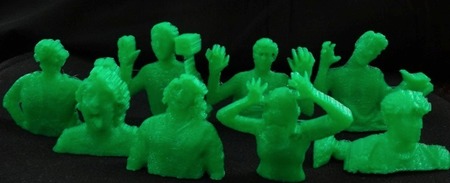We’re looking at a PDF, strangely stored on Thingiverse, where one normally finds 3D models. The PDF is an academic document entitled, “3D Printing for Math Professors and Their Students”.
It’s exactly that: a paper taking the reader through the process of linking mathematics and 3D printing. Yes, this means generating intricate 3D models mathematically, instead of painstakingly developing them by hand.
The paper uses Wolfram’s Mathematica tool as the mathematics generator. To give you an idea of how it works, let’s look at their first generation, a dome:
1 surface =Plot3D[{Sqrt[1 – x^2 – y^2]}, {x, -1, 1}, {y, -1, 1},RegionFunction -> Function[{x, y, z}, x^2 + y^2 <= 1],BoxRatios -> Automatic]2 Export[“C:\\Users\\Owner\\Desktop\\hemisphere.stl”, surface]}
You’ll need a bit of algebraic knowledge to follow this, but basically a graph of points is created using a formula and then it is converted into an STL file for 3D printing.
The paper continues with several fascinating examples:
- Transform a 2D image into a 3D profile based on light levels
- Convert an elevation map into a 3D landscape model
- Develop a 3D portrait using Kinect scan information
There are more examples, too, each progressively more complex.
You’ll be an expert by the time you finish the paper.
Note: You’ll need a copy of Mathematica for this experiment and it’s not free. If you’re a student you qualify for significant discounts, but otherwise you’re spending USD$295 and up depending on the type of license you’ll need.
Via Thingiverse


